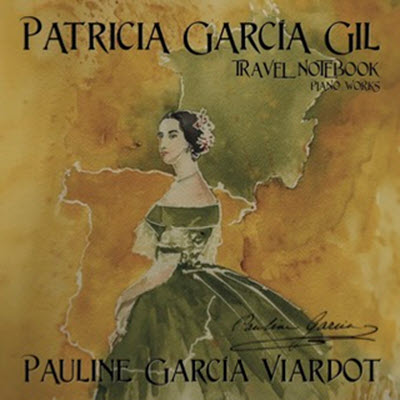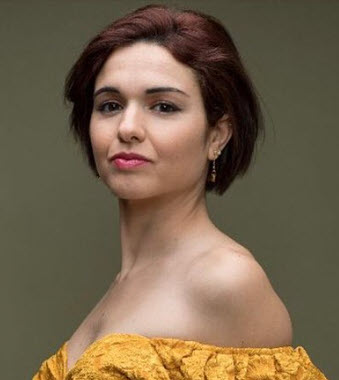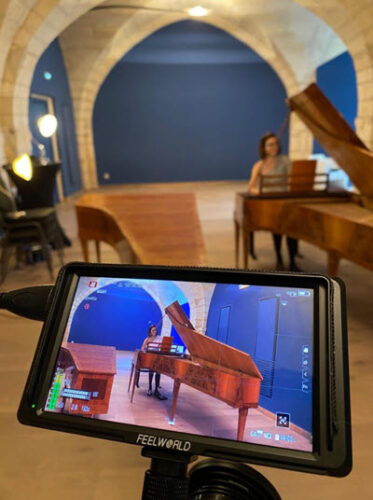by Stephanie Manning
Published December 11, 2023
Pauline García Viardot: Travel Notebook – Piano Works. Patricia García Gil, fortepiano. Clave De Si Records.
Pauline García Viardot lived a rarified life. Born into a very famous musical family, the French mezzo-soprano inspired leading artists across the 19th century, a long and varied list including composers Berlioz, Gounod, Brahms, and Saint-Saëns, and novelists George Sand and Ivan Turgenev. She took lessons with Liszt, played duets with Chopin and the Schumanns, and hosted one of the leading intellectual salons in Paris.

A new recording from fortepianist Patricia García Gil shows another side to Viardot (1821-1910) — as a composer. In her lifetime, she published operettas and countless songs and mélodies for her own voice. But the piano was Viardot’s first musical love, before her family pressured her into a singing career after the untimely death of her celebrated older sister, Maria Malibran. Most of Viardot’s youthful piano works were kept private in their day, but García Gil, born in Spain and now a graduate student in North Carolina, has methodically researched and tracked down most of them. (She performed as part of the EMA Emerging Artist Showcase at the 2022 Berkeley Early Music Festival & Exhibition.)
The resulting recording, Pauline García Viardot: Travel Notebook — so called because of the various cultural inspirations of its compositions — adds up to just over 30 minutes of playtime. Each of the 11 tracks are less than five minutes long. But to distill this recording into numbers would be to ignore the real work and creative spirit involved.
Most tracks are summed up as short and sweet dances, like the playful Italian Mouvement de Tarantella, the Polish Mazourke (inspired by Viardot’s friend Chopin), and the Spanish Alza Peptia, whose form originates from García Gil’s home region of Aragon, Spain. The brief and similar nature of the works makes some of them charming but not necessarily memorable, like the opening Andantino and the Gavotte from Deux pièces pour piano.

Still, there are plenty of ways García Gil makes her performances interesting. She injects the cheery Valse with a slight air of mystery or wistfulness, having a bit of fun with its delayed resolution. And the curiously stream-of-consciousness Suite arménienne, subtitled “Quand même!” (“Whatever!”), bounces around between melody, style, and mood as if the composer simply sat down to write whatever was on her mind.
The various cultural inspirations of these compositions are no doubt influenced by Viardot’s own life, where she traveled around Europe, the U.S., and Mexico and became fluent in at least four languages. Fittingly, García Gil did some traveling of her own for this project, from the Library of Congress in Washington, D.C. to Florence, Italy, where she recorded this album on an 1851 Ignace Pleyel & Cie. piano. The historic instrument — which closely mirrors one that Viardot owned — provides plenty of color and flexibility for the performer’s love of this music to shine through.

Nowhere is this love more clear than in the Polka. As García Gil explains in the program notes, she “dares to realize an accompaniment from the harmonic sketch provided.” Each time the melody is repeated, García Gil adds her own flair, transforming a simple baseline to make the piece much more spirited and danceable. It’s this kind of clever, but not showy, creativity that elevates the piece beyond some of the others on the record.
The most memorable piece, however, is the second half of the Deux pièces pour piano, the Serenade. It instantly stands out for the harmonic complexity and dexterity. García Gil tosses off the left hand arpeggios with pure joy, providing a rich background to the Spanish-inspired melody.
García Gil writes that Viardot is her “personal heroine,” emphasizing her creativity and virtuosity. But, really, those words aren’t even necessary — the dedication in researching and recording this project speaks for itself.
Stephanie Manning is a regular correspondent for ClevelandClassical.com and served as a fellow at the 2022 Rubin Institute for Music Criticism. A graduate of Oberlin Conservatory, she currently studies journalism at Concordia University in Montreal.




